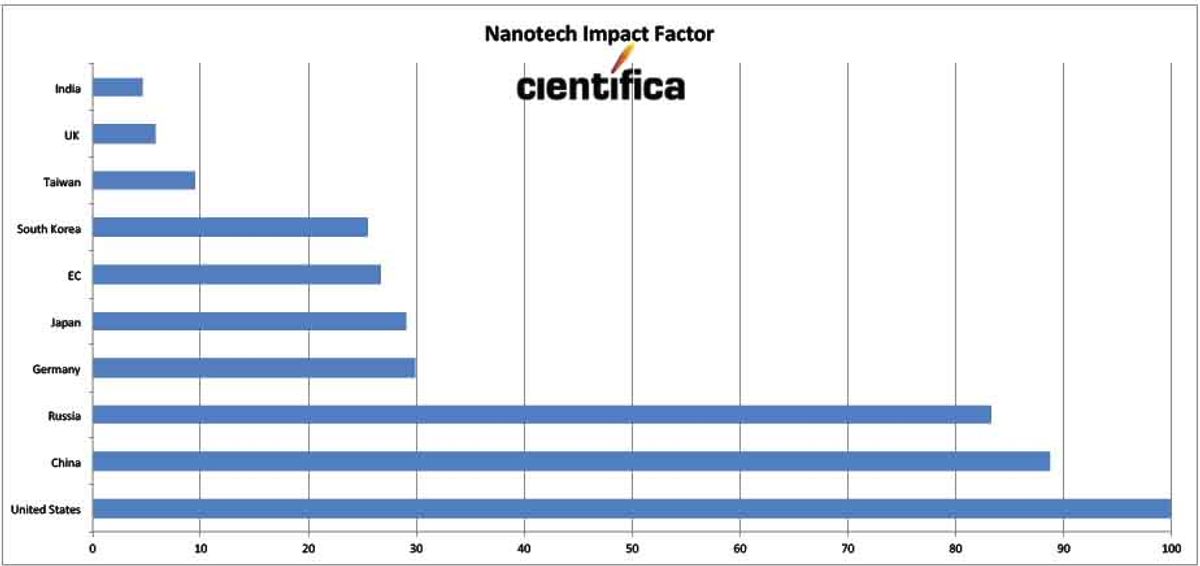Since I had a part in assembling some of the data for a recent Cientifica white paper, entitled Global Nanotechnology Funding [PDF], which was released this week, I thought I might offer some perspectives on the data collected.
While there are some interesting tidbits for this year, such as because of a small dip in US nanotech funding in 2011, in terms of Purchasing Power Parity (PPP) China will slightly outspend the US this year (China will spend $2.25 billion and the US $2.18 billion), the long-term trends are perhaps more critical.
Yes, Asia’s public spending on nanotechnology research is growing faster than that of the West, and that disparity between the two regions' rate of growth would be truly alarming if Russia had not jumped in a few years back with huge influx of cash.
But despite this trend in Asia, there is the enigma of India. On the one hand, we have witnessed its economic miracle of leveraging its excellent science and engineering schools and low wages to create a global IT powerhouse. But in nanotech, the miracle has not quite materialized.
This prompted India’s leading nanotechnology expert, Prof. CNR Rao, to comment just last week that India may be missing out on the “nano bus.”
“This is the only field in which we can do something. And if we don’t catch up with others in the next 10 years, we may miss the ‘nano’ bus too,” Rao told media recently.
There seems to be a number of factors that are causing India to lag behind. Chief among them would likely be a lack of funding, or perhaps more accurately put, an inability to spend its allotted funding.
I suppose we could leave it at that, but as the Cientifica white paper points out, where India really suffers is in the area of capitalizing on nanotech R&D. This metric is brought to us by Cientifica’s tweaking of the World Economic Forum’s (WEF) Global Competitiveness Report, which allows us to see how well various countries can translate their public funding into real-world effects.
So the problems that plague India in developing nanotechnology are those that handicap the rest of the world. There may be funding for research, but there is little to bridge the long development period between the lab and the fab. Commercializing a nanotech product is not the same as hiring some guys to write some code for some new software. This is creating a manufacturing base to produce sometimes entirely new classes of devices. Not the same thing, not even close.
While the nations of Asia can rightfully be patting themselves on the back for their strong public commitment to nanotech (with the possible exception of India), the US doesn’t need to start pulling its hair out. According to this report, when taking into account the WEF’s Global Competitiveness Report, the US still holds a strong position in the so-called nanotech race.
Dexter Johnson is a contributing editor at IEEE Spectrum, with a focus on nanotechnology.




